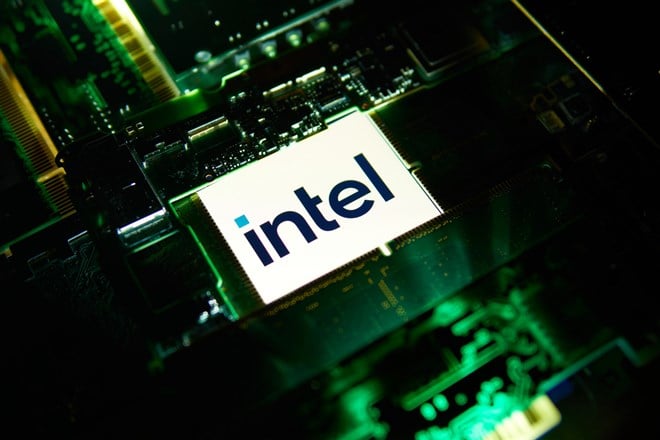
Intel (NASDAQ: INTC) has managed to hold steady at a time when many other stocks are struggling. While shares are down nearly 12% on the year—trading at $45.42 as of May 4, 2022—it is performing better than the rest of the Nasdaq Index, which has fallen 21%. This puts the Nasdaq in the territory of a bear market for the remainder of the year.
More importantly, though, Intel's decline is not nearly as dramatic as their Nasdaq rivals. For example, microchip rivals Advanced Micro Devices (NASDAQ: AMD) and Nvidia (NASDAQ: NVDA) have both suffered big losses. They are down 36% and 33% YTD, respectively. With that in mind, Intel's slip could very well be temporary and they will soon bounce back.
Intel Had a Strong Forst Quarter
Although Intel has lowered its guidance for the second quarter, its first-quarter report was mostly positive. This is largely due to the chip manufacturer beating both top and bottom estimates. For Q1, Intel reported earnings per share (EPS) of 87 cents, which beat Wall Street estimates of 81 cents. In addition, the Santa Clara, CA-based company's revenue reached $18.4 billion, which also surpassed analyst expectations of $18.31 billion. While Q1 revenue looks to be down just 1% YOY, Intel also showed 25.52% return on equity with a net margin of 25.14%.
This growth has been slightly offset by a dip in revenue in their Client Computing Group, which includes products like personal computer chips. This sector slipped 13% in the first quarter YOY, to $9.29 billion. However, this decline may be a result of Apple (NASDAQ: AAPL) choosing to start making and outfitting their own chips and processors, meaning they will no longer buy them from Intel. And, of course, pandemic-related shutdowns across China and the armed conflict between Russia and Ukraine have contributed to supply chain issues that are certainly exacerbating the slowdown in sales.
Lowered Guidance for Second Quarter
The loss in Client Computing Group business volume has complicated Intel's guidance moving forward. For one, some analysts estimate that PC shipments fell more than 5 percent in Q1 2022. This includes both desktops and notebooks/laptops, as well as workstations. The PC market has experienced steady growth over the course of the pandemic—likely because more people have started working from home—but things are changing quickly thanks to complications of the pandemic and inflation concerns. This may help explain why overall revenue for the quarter was down 6.6% compared with the same quarter from last year.
Again, while most of the data suggest they have had a solid start to the year, Intel has reduced their estimates. As such, Intel now forecasts Q2 EPS of 70 cents with $18 billion of revenue. Analysts had initially expected Q2 EPS to reach upwards of 83 cents with revenue of $18.83 billion. Intel posted an EPS of $1.39 during the same quarter last year.
Furthermore, Intel Corporation has been given a Long-Term Technical rank of 14. This indicates that, over the last 200 days of trading, INTC has now scored in the lower half of stocks. More importantly, 86% of stocks on the market have scored higher. In addition, Intel has scored 96 in this matrix when it comes to semiconductors, which puts them just north of the bottom 10%.
Its Buy and Hold for Intel Stock
At present, Intel continues to affirm a revenue estimate of $76 billion for the fiscal year 2022. They specifically point to stronger performance in data center and networking markets that will shore up the losses. As a matter of fact, Intel managed to generate $6 billion in revenue just from their data center and artificial intelligence business (DCAI) alone, which is up 22% YOY.
Moving forward, Intel anticipates the DCAI segment will continue to thrive in this fast-growing market. Ramping up production, sales, and distribution of their Sapphire Rapids server processors will definitely help keep pace. And with the hyperscale data center market expected to demonstrate annual growth of 26% through the end of this decade, Intel is easily poised to make up for any slack they may be experiencing today.
Finally, on top of DCAI growth, Intel's emerging businesses—particularly accelerated computing systems and graphics (AXG)—look to be improving as well. In fact, AXG revenue at Intel is up 21% YOY in Q1, to $219 million. While this is not substantial growth it could be a strong indicator of things to come
Companies in This Article: